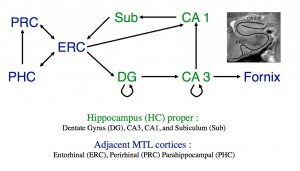
Serial has quickly become an international obsession. From the master storytellers of This American Life, the focal story of the inaugural season is about details surrounding the 1999 conviction of then high-school student Adnan Syed for the murder of ex-girlfriend Hae Min Lee. A new episode is released every Thursday (this week will be the 11th episode), and narrator Sarah Koenig artfully pieces together recollections from other suspects, high school friends of Adnan and Hae, detectives, judges, family members and friends, and Adnan to form a complicated and nuanced story. The thesis of each chapter centers around the following questions: did Adnan do it? Who is telling the truth? What really happened on January 13, 1999? So far, the answer is always the same: we don’t know. It is likely that we won’t know by the time this season of Serial ends. An appeal hearing has been set for Adnan in January 2015.
Now I’m not going to spend the rest of the post debating the psychological adjustment or psychopathy of the key players in the podcast. Rather, I want to highlight a psychological phenomenon that Serial necessarily hinges on: memory. Nearly all the content relies on recollections of events that happened 15 years ago. Even police notes and testimonies are based off of what was thought to be remembered (although at a much more proximal time to the murder than now). Nonetheless memory plays a crucial role in the story telling of how events unfolded, who saw who doing what when, the whole gamut. I argue that it’s really important to appreciate how memory is encoded and subsequently retrieved in order to address the above questions.
Memory is a funny thing because it isn’t as objective as we think it is; Koenig notes this in the very first episode.The specific kind of memory I want to focus on is declarative (i.e. explicit) memory. Declarative memory is a type of long term memory that can be stated in words. It can be further divided into episodic memory–memory for personal experiences events–and semantic memory–factual information or knowledge. The hippocampus and its surrounding structures are the brain regions are important for this type of memory.
In a very simplified form, memory is built on connection between cells in the hippocampus and its surrounding structures (i.e., entorhinal cortex, parahippocampus, and perirhinal cortex). Connections are initially formed when first experiencing an event and can be strengthened overtime through long-term potentiation. It was believed that once a memory was formed and had time to consolidate it is impermeable to interferences. And on an individual basis, most people truly believe their memories are personal and veridical. However, a large body of research has shown that long-term, declarative memories can be changed.

Dr. Elizabeth Loftus, now at University of California, Irvine, is a pioneer in demonstrating just how malleable memories are to new information. Even individuals who have highly superior autobiographical memory (HSAM, also known as hyperthymesia) are prone to falsely remembering misinformation. In that study, Loftus and colleagues tested individuals with HSAM and controls on a battery of memory-distortion tasks. To give a taste of what one of these tests may entail, here is an example of the misinformation paradigm. Participants saw a slideshow consisting of pictures depicting a man stealing a wallet from a woman. Later, participants read a narrative version of this event with 3 items of misinformation placed in among 47 true sentences. This is followed by a memory test and a source test. Picking a misinformation sentence counts as a false memory of the original event and indicating the misinformation was depicted in the photos counts as a source-confirmed false memory. The results were compelling–participants with HSAM were just as likely as controls to inaccurately reconstruct their memories.
Dr. Karim Nader of McGill University was one of the first to demonstrate the neurobiology underlying memory change. He used fear conditioning in rats to show that the act of remembering makes those specific memories vulnerable to change. Therefore, memory is subject to editing. To recall an event requires the connections to reopen. Once the connections reopen, the memory can be blocked or forgotten. This is also when new information can be inserted and reconsolidated.
This has many implications for people with anxiety disorders, including PTSD. But let’s bring this back to Serial. Hae Lee’s murder was not trivial by any means. It was an incredibly tragic event that was reported on a talked about. People were interviewed, interrogated and testified multiple times. Each time this happens, the memory is susceptible to change. Koenig comments on inconsistencies in Jay’s court testimonies, time stamps, and police report. Jay is another suspect in the case. For example, he recalls talking to Adnan while working at a video store. However, employment records show that Jay hadn’t begun working then until a few months later. Others distinctly remembered that it snowed on January 13th, when weather reports from that day indicate otherwise.
Adnan adamantly holds onto his innocence just as strongly as others claim that he committed the crime. Koenig mentions several times that someone is lying. But the issues surrounding memory (not to mention selectivity of memory) may make it impossible to accurately reconstruct the events. Especially because reconsolidation must have occurred in multiple cases. New coverage of the murder may have also altered how key players remembered specific details. Even the language behind questions during interrogation may have slightly altered memories.
There are two episodes left in this podcast. In those two episodes, I highly doubt listeners will get adequate answers as to who is lying. In part because everyone believes their memories are definitely true. However, the malleability of long-term declarative memories is something to consider while piecing the narrative accounts surrounding the murder case.
